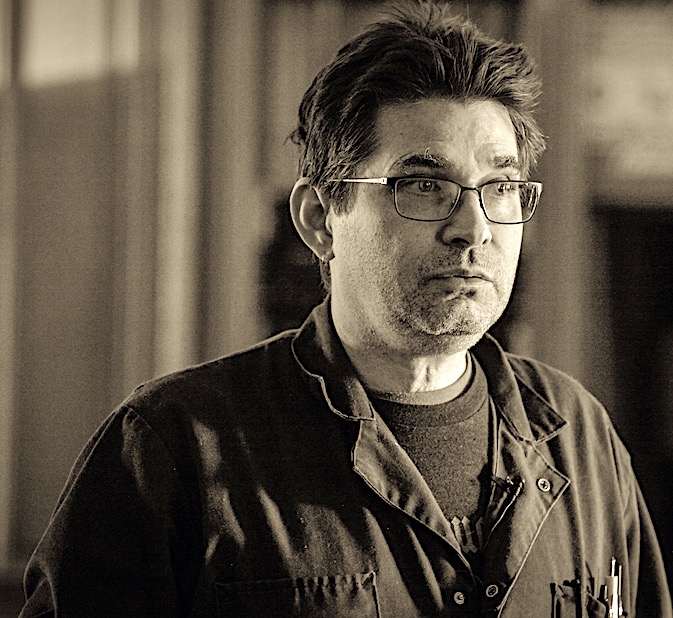- in Production by Bobby Owsinski
Engineer Steve Albini On Recording Drums

One of the most respected of the new breed of engineers, Steve Albini gained his considerable experience and reputation working primarily with underground and alternative bands. While his most famous credit remains Nirvana’s “In Utero”, Steve has worked with a diverse lineup of artists such as PJ Harvey, The Pixies, The Stooges, Cheap Trick, Silkworm, Jesus Lizard, Bush, and even the mainstream Page/Plant Walking to Clarksdale. In this excerpt from the 4th edition of the Recording Engineer’s’ Handbook, Steve talks about his approach to recording the drum kit.
“Bobby O: Do you have a standard setup when you track?
Steve Albini: No. I get asked to do a lot of different kinds of sessions; everything from 3 piece rock bands to acoustic soloists to big sprawling acoustic ensembles to large electric groups where you have the equivalent of a couple of rock bands playing simultaneously, so I try to have an open mind about what is expected of me because I’ve been in bands myself and I know within our band our methodology was different from other bands. I want to give other bands that same freedom to develop their own vocabulary and methodology. What I do is subordinate to what they do, so there isn’t really a standard setup.
Given a three piece rock band for example, I would prefer to have them try to play live, although not necessarily all in the same room, so that they’re interacting with each other and can accommodate each other’s little changes in emphasis and timing.
Given a larger ensemble, I’ve always found that you get better results if it’s possible to set everybody up to play live. I’ve done sessions with as many as 12 or 14 band members playing simultaneously. If it’s possible to have everybody play at once, that’s the best way to do it.
What determines what mics you use on the drum kit?
What it should sound like is determined by a conversation with the drummer. Different mics have different character. The RE-20 has a quite mid-rangy sort of popping sound if your going for a percussive bass drum sound. The D-112 has sort of a hollowed out sound and doesn’t have as much mid-range. It has more attack and deep bass. The M88 doesn’t have quite as much low energy as D-112 but it doesn’t have as much mid-range energy as the RE-20 so it’s sort of a middle ground between those two. The 421 is much harder sounding and more pointed. It has reasonable bass response but it’s a more aggressive sound. The condenser mics tend to get used when the bass drum is being played quite softly because you want to pick up the character of the resonance and character of the front skin.
There’s a lot of variations in sound in what you would call the bass drum so it’s important to have a conversation with the drummer and to listen quite closely to what the bass drum actually sounds like.
Do you try to make the sound fit into the rest of the band or just within the kit?
The presumption that I start with is that the drummer already has the sound worked out within the band. I don’t work with a lot of bands that are assembled session players. Virtually all the bands that I record are self-contained entities that communicate within themselves in their own way and work out their own problems internally, so if the drummer has got a particular sound to his kit that he likes, I take that to be a part of the innate sound of the band. If somebody doesn’t like something at any point, that’s your first clue that you have to stop and address something, but I’m not of the opinion that I can discern what is the best sound for the drum kit within a band. I always like to leave those kind of aesthetic decisions up to the band.
Another thing that I’ve noticed, when the drummer has a drum kit that has toms in it, the sort of singing resonance of the toms that goes along with the bass drum can be a big part of the bass drum sound. Trying to get rid of those rings and resonances is sort of a standard practice, but I’ve never followed that advice. I like to be able to hear the drum kit as a single instrument rather than as a collection of discrete sounds. For example, when the drummer hits the bass drum the floor tom goes “Hmmmm,” I tend to like that and believe that it’s part of the character of the drum kit.
Do you use drum tuners or change heads?
In the same way that I think it’s a good idea for the guitarist to have new strings when they go in to record, I think it’s a good idea for the drums to have new heads. We have drumheads here at the studio so we can swap them out if need be. I tend to think that Remo Ambassador heads record better than other drum heads. Whether clear or coated is sort of a performance choice, but I tend to think that they sound better, or at least are more predictable in their behavior, so I always recommend that the drummer get new heads. If he doesn’t have a preference, I would suggest Ambassadors.
If the drummer needs help tuning his drums I’m happy to help, but generally speaking, a drummer that knows his drum kit and plays regularly will have a preferred sound for his drums and I don’t want to interfere with that.”
You can read more from The Recording Engineer’s Handbook and my other books on the excerpt section of bobbyowsinski.com.

